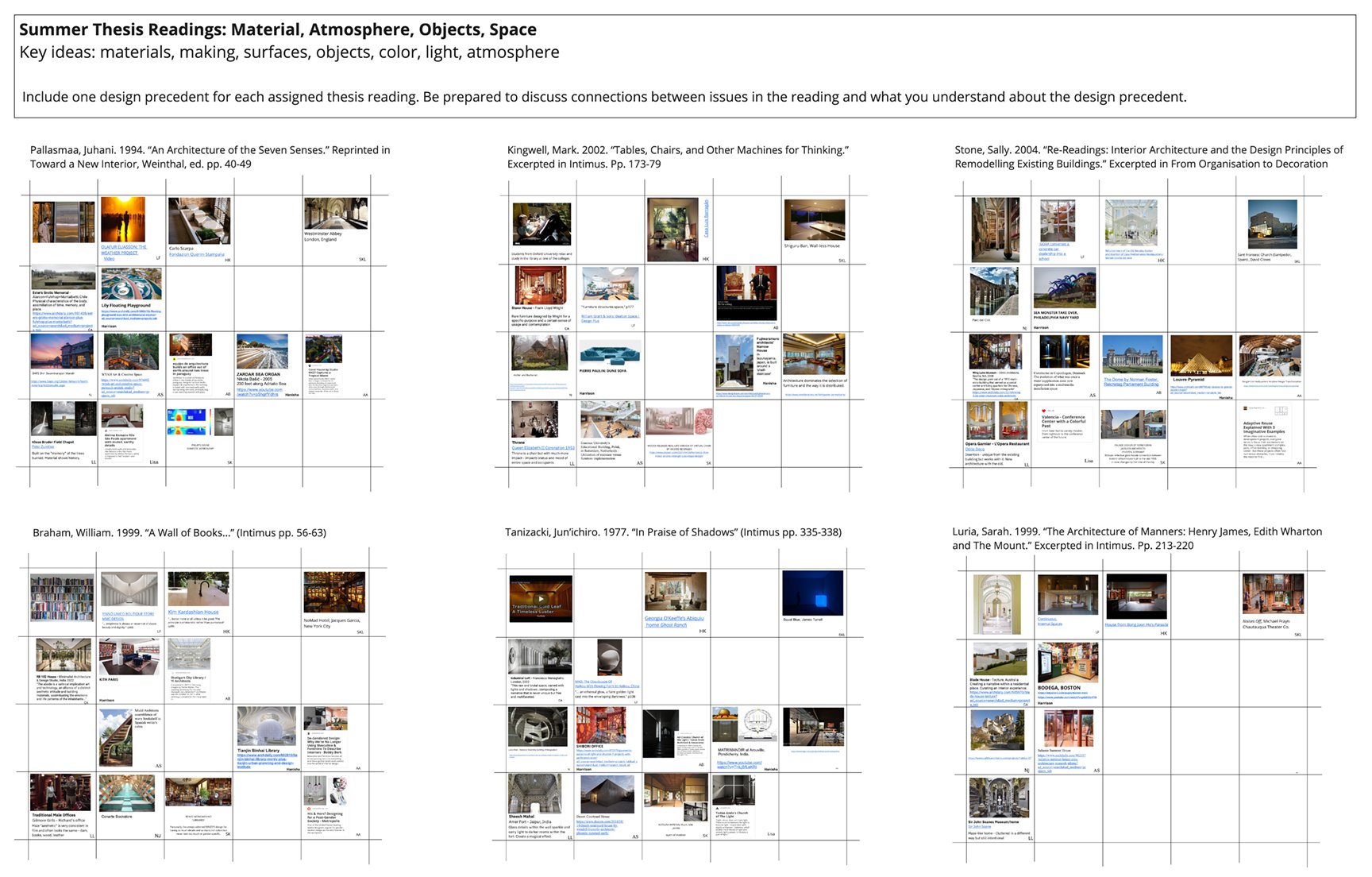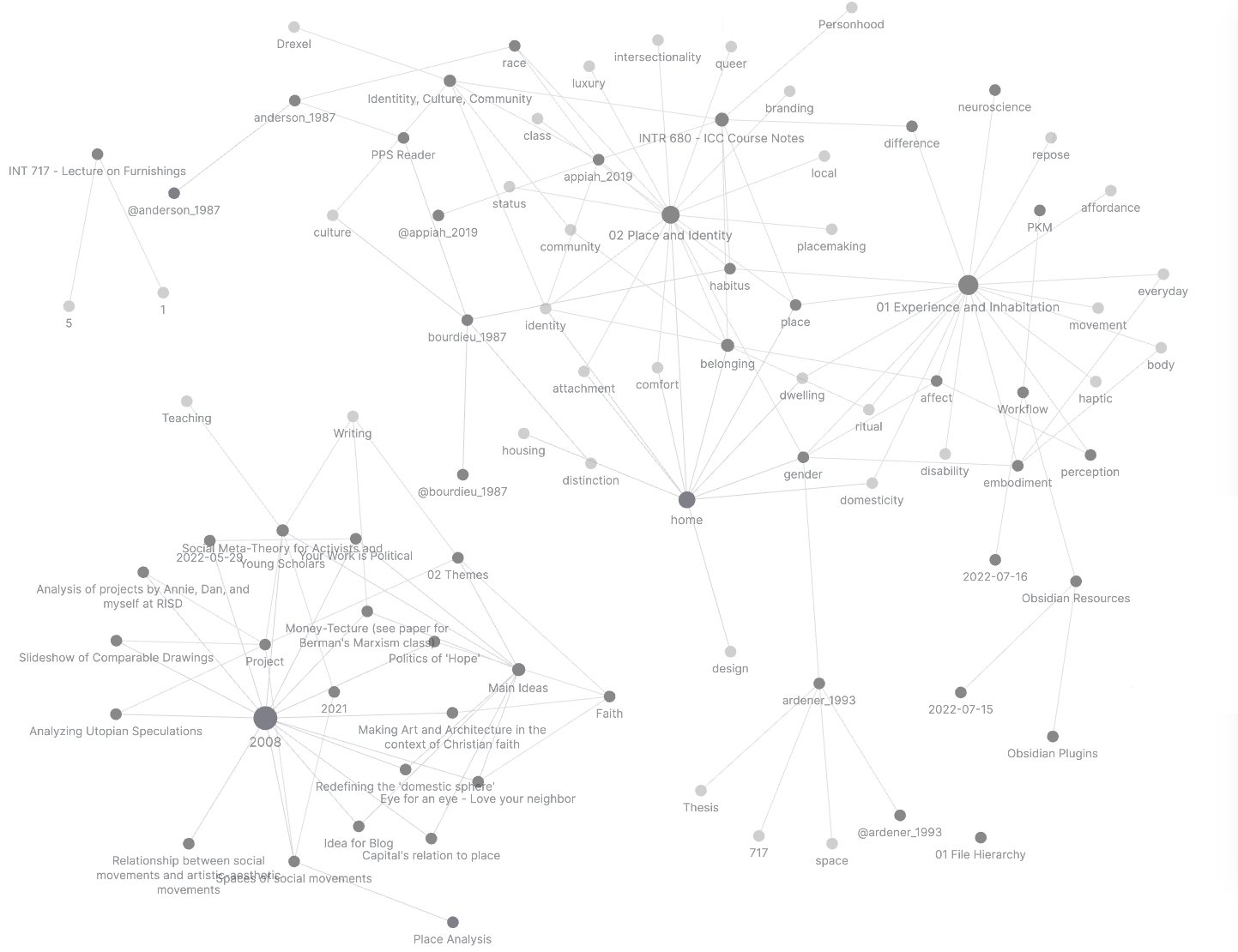DIGITAL TOOLS FOR SCHOLARSHIP AND TEACHING
Digital Tools for Scholarship and Teaching
Digital tools are ubiquitous and students and teachers today work fluidly using a variety of hardware and software platforms. That said, I’ve found a few tools that specifically enhance and support scholarship, teaching, and learning. While particular use may vary from person to person, these tools generally have broad application and are available for little or no cost. There is a plethora of information available on how to use these programs; here I will briefly describe how I use them in the context of scholarship and teaching.
Tools that support collaboration and process-oriented activities
There are a variety of similar digital whiteboard apps, of which I use Miro. One of the most successful ways I’ve employed Miro is as a pin-up interface for design students working digitally. In teaching, pin-ups are useful to check in on student progress, ensure that everyone is on the same page about expectations, and to generate discussion. For example, using Miro for thesis development, I have facilitated discussions of readings and design precedents by asking students to share images that they find relevant. Seeing all the images together sparks interesting conversation and allows connections between readings and design projects to emerge. Miro has also been valuable as a tool for the rapid iteration and development of graphic ideas, as participants are able to easily move/add/edit images and work individually or collaboratively.
Google documents are another easy and familiar tool for real-time collaboration. In 2021 I ran a workshop at the IDEC conference to highlight successful use cases and share best practices in using Google docs as a tool for design educators. As I noted in that presentation, “The interaction is comfortable, easy, and intuitive, and allows for simultaneous real-time interaction within the documents, between as many users as necessary… Rooted in collaboration and exchange, the productivity tools allow courses to reproduce many elements of the in-person studio experience, including opportunities for students to see each other’s process work, and promote interactions both in and outside of class. Interactivity enhances the studio culture for everyone, including faculty, who can keep regular tabs on progress much like walking through the studio in person. It is quick and effective, both in and out of class, to review, comment, or annotate a drawing that a student has added to the Google docs. The markups are saved and visible to all participants, and easy to return to if necessary, building a repository of work for future reference.”
Tools that support knowledge management
These tools belong to a category that is sometimes referred to as “building a second brain” which recognizes that we have the ability to extend our capacity by accessing digital repositories of information. In particular I like these tools because they help me curate information and share it in ways that are organic to my teaching and scholarship.
Zotero is a reference management tool that makes it easy to manage bibliographic data. We used Zotero intensively in preparing The People, Place, and Space Reader. Subsequent versions of Zotero have incorporated annotation tools, making it an excellent tool to streamline the scholarship process, especially as it works across platforms (I prefer to read/annotate on an iPad and use those annotations in writing on a desktop). I use Zotero in teaching by sorting reference material into subtopics to build syllabi and reading lists for students.
Obsidian is a tool for personal knowledge management (PKM), and it works for me like a notebook in which ideas can be easily linked, searched, and mapped. My academic practice involves continually generating and developing ideas, and Obsidian allows this process to be both free-flowing and organized.
Notion is another tool for personal knowledge management, and it works for me as a database in which I can easily archive, sort, and organize information. My academic practice is built on a repository of knowledge (design precedents, literature references, etc.) that I rely on being able to easily access and share.
One other platform that I use as a tool in teaching and learning is Instagram. In many serious and consequential ways Instagram is detrimental to student success and wellbeing. That said, I have found a number of uses that can enhance teaching and learning. In some courses we’ve used Instagram as a medium for curating and presenting ideas. From the perspective of a small academic program, Instagram can be a vital channel to build reputation and cultivate community. As a dissemination tool that allows and encourages audience engagement, Instagram has proven useful and perhaps even fosters a sense of shared community.
Collaborators: Various
Related Projects: Design Precedent Database, Facilitating Graduate Thesis, SpaceTime Student Installation Projects, Drexel Graduate Interiors Program, People, Place, and Space Reader




